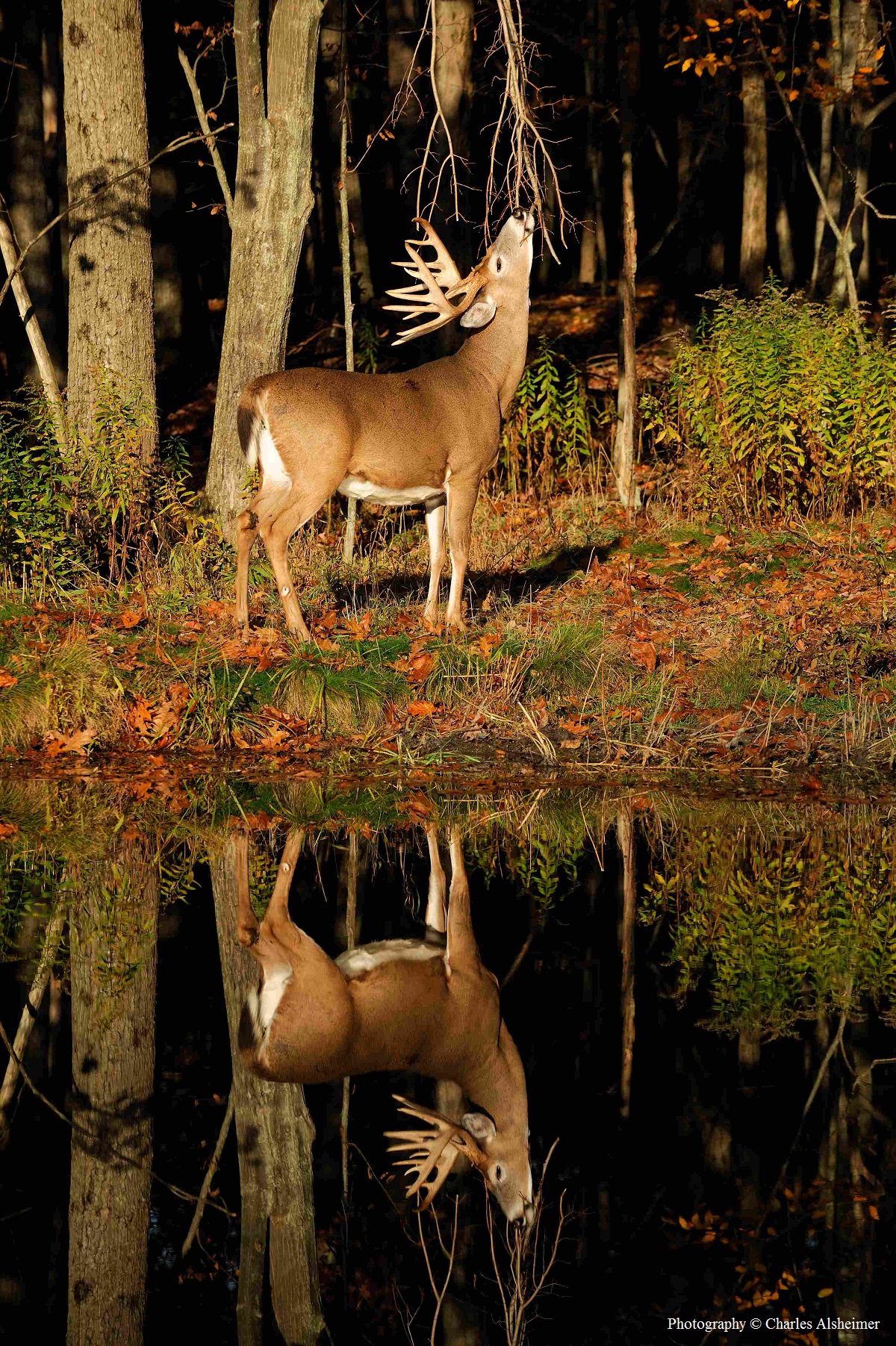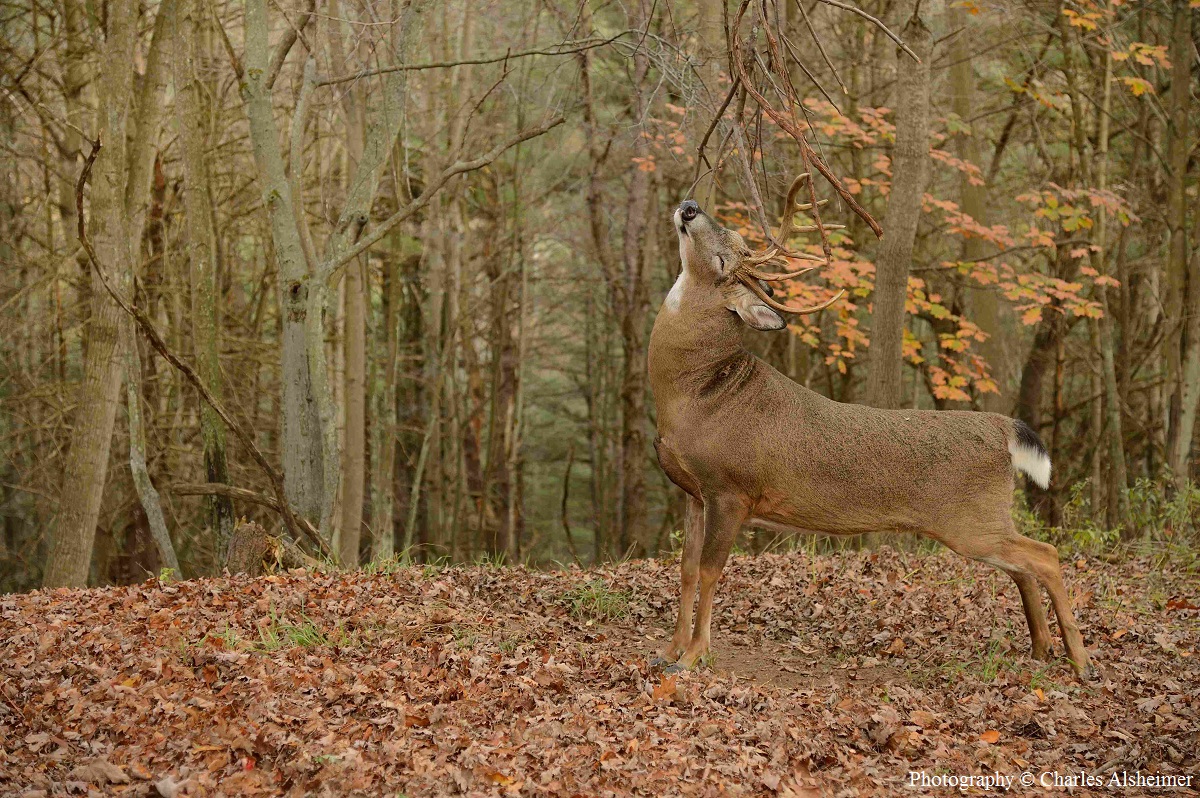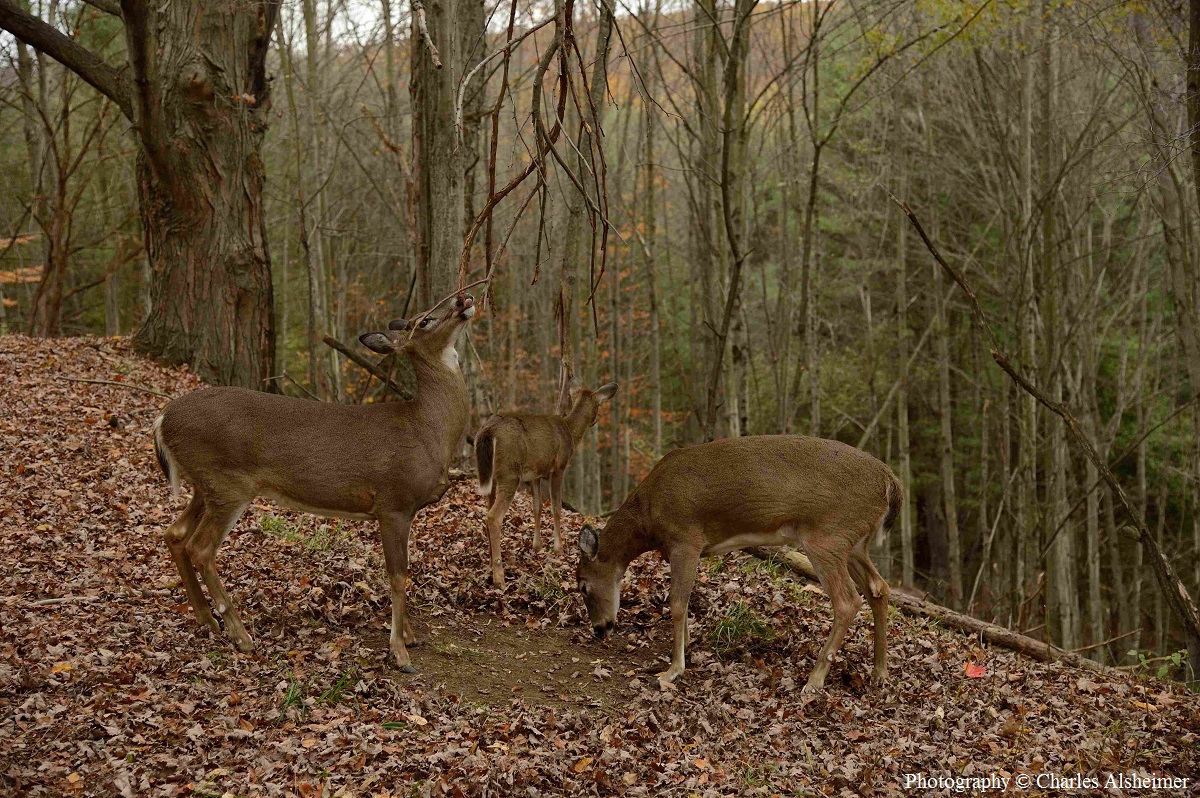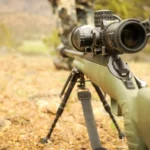One of the greatest ways whitetails communicate with each other is through the scent they leave behind. Throughout the year bucks are constantly marking their territory with scent, and scraping behavior is one of the chief ways they do it. Though bucks will work a scrape’s overhanging licking branch throughout the year their most aggressive scraping is done from October to December, when testosterone levels are highest.
Bucks will work prime licking branches 365 days a year with 80% of scraping behavior in the North occurring from mid-October to mid-November.
When a whitetail buck makes a scrape he does so where there is an attractive branch hanging along a roadway, at the edge of a field, on a well-worn trail, or in a random area he’s walking through.
In most cases a buck begins the scraping process by rubbing his forehead, preorbital, and nasal glands on the branch and in some cases will actually lick and chew on the overhanging branch. Once done, most bucks will paw the leaves and other debris from the ground under the branch, then urinate into the pawed out earth. The process usually takes less than two minutes, but during this time a buck will leave liberal amounts of scent behind. Scraping, like rubbing, allows a buck to make his presence known by dispensing scent throughout his area.
 Typical scraping behavior involves leaving scent from a buck’s nasal, preorbital and forehead glands. When done working the branch bucks will paw the ground and urinate into the ground.
Typical scraping behavior involves leaving scent from a buck’s nasal, preorbital and forehead glands. When done working the branch bucks will paw the ground and urinate into the ground.
Hunters debate whether scraping is primarily a “buck thing” or if it’s done to attract does. During my years of photographing and hunting whitetails throughout North America, I’ve seen many does work a scrape’s licking branch. Only twice have I actually seen a doe paw the ground below the licking branch after scenting the licking branch. However, I’ve killed several does in archery season that were working a scrape’s licking branch when I released the arrow. On the other hand I’ve seen and photographed hundreds of bucks making scrapes during my career. So, based on this, it’s my view that scraping is primarily a buck behavior, a behavior they use to dispense scent and show dominance.
Though they seldom paw the ground does will actively work a scrape’s overhanging licking branch.
I believe scraping is also a satisfying, conditioned response for bucks. When working an overhanging licking branch, a buck is greatly satisfied by the branch massaging his forehead, preorbital and nasal glands. I don’t believe a buck consciously knows he is spreading his scent to other deer.
Judging from the hundreds of photos I’ve taken of scraping bucks, it appears the satisfying and stimulating aspects of scraping might explain why a buck performs scraping behavior so frequently. I’m not saying scent-depositing isn’t a big part of scraping, because it is. But I’m convinced the dynamics of scraping are incredibly complex and serve several functions, probably more than we’ll ever realize.
The age structure of a buck population heavily influences the amount of scraping that will take place. If yearling bucks dominate an area, scraping behavior will not be great. However, if there are an abundant number of 2+ year old bucks in the population, scraping sign will be very evident.
In 1990 I was a part of a scrape research project conducted on the Avery Estate in New York State where deer could be closely monitored in a natural setting. We discovered that during the two weeks leading up to peak breeding mature bucks made 6 to 12 scrapes every hour they were on their feet.
 During the two weeks leading up to peak breeding mature bucks can be expected to make between 6 and 12 scrapes every hour they are on their feet.
During the two weeks leading up to peak breeding mature bucks can be expected to make between 6 and 12 scrapes every hour they are on their feet.
Classifying Scrapes
The way I classify the scrapes I find has evolved over the years. When hunters began to understand the whitetail’s scraping process in the early 1970s scrapes were commonly described as “boundary, secondary and primary.” Though I’ve used these terms, I learned along the way that there was a clearer way of defining what I was finding and photographing. In order to make the scraping process easier to understand I’ve settled on referring to the scrapes I find as boundary, random and primary.
Boundary scrapes: Boundary scrapes are made as bucks travel through their territory. These scrapes often show up along the edge of fields, fence rows and old roadways. Those made along field edges are nearly always made at night. Because of this I pay little attention to these scrapes except for checking the track size. If the track is more than 2 ¼ inches wide (with no more than a ¼ inch split in the toes) the buck is probably over 2 ½ years old and nearing maturity. Such bucks will also tip the scales at over 175 pounds (live weight) in the North.
Random scrapes: Random scrapes are just that—scrapes that are made spontaneously as a buck cruises his territory. A buck will often make a random scrape whenever he comes upon an attractive licking branch and is “moved” to work the site. Seldom will they be reused and in most cases are not serious candidates for a hunting set up.
Primary scrapes: Primary scrapes are the ones hunters need to pay attention to. In many ways they are the “mother lode” of whitetail scrapes, with some having the potential of becoming very attractive to whitetail bucks. They are most often found in strategic locations—inside corners, ridge lines, and especially along well-worn trails between bedding and feeding areas during the rut.
In many instances bucks will make a line of scrapes (20 to 50 yards apart) along such trails. Because many primary scrapes are found along well-worn trails, more than one buck (and does) will work and rework them during the seeking, chasing and breeding phases of the rut. I’ve probably killed more bucks over primary scrapes along well-used runways than any other place.
Hunting scrapes in prime travel corridors can be a very successful strategy in the days leading up to peak breeding, when bucks are on the move.
Timing
Though bucks work licking branches 365 days to leave their scent, prime scraping behavior occurs in the 30 day window leading up to peak breeding, especially during the last 10 days. Once breeding kicks in scraping behavior drops off drastically. During the post-rut scraping still occurs, but it is only a fraction of what it was before the rut.









































